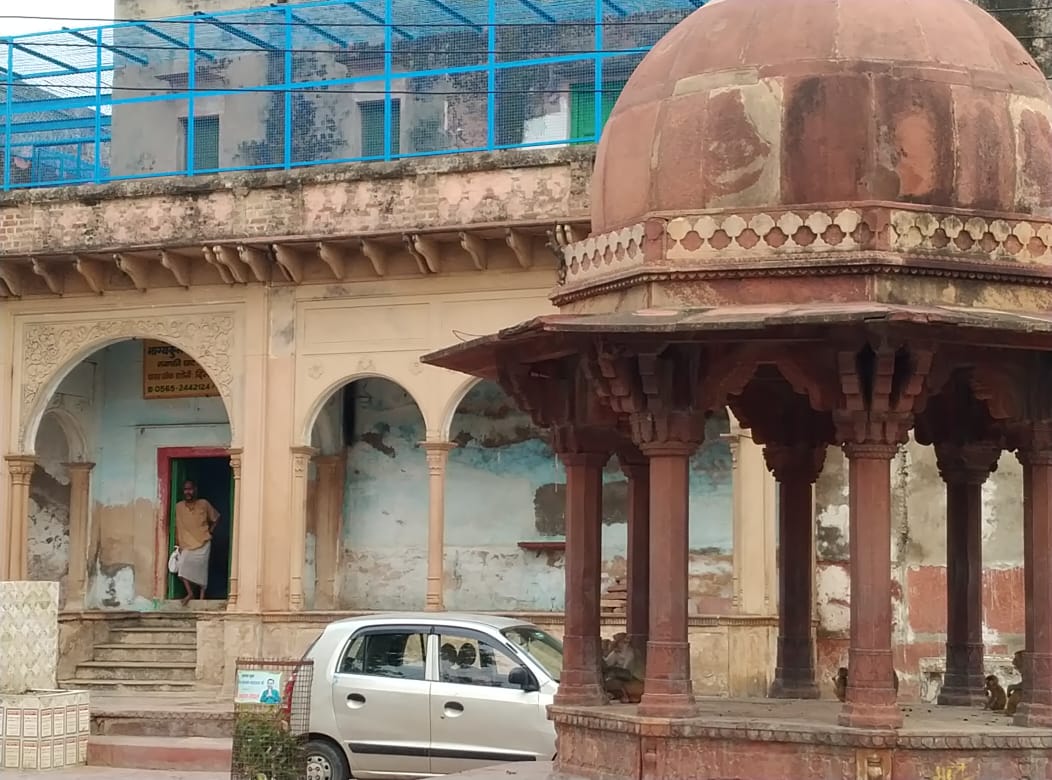Once situated on the bank of Yamuna, Radha Teela has been the roosting place for large numbers of birds whose numbers are rapidly dwindling due to inhospitable conditions created by multi-strorey/high-rise buildings.
Vrindavan, 2020-11-16 (VT): The construction of the multi-storied buildings is against the ethos of Vrindavan. The pilgrimage town once known for its sprawling gardens, forests, groves, peacocks and cows is struggling to maintain its original ‘swaroop’ (character).
The silence of the local saints and Brajwasis allowed the real estate companies to build high rise buildings in Vrindavan. But now they have begun to raise their voices against these constructions around their ashrams.
One of the victims of high rise construction is Radha Teela in Raman Reti. Once situated on the bank of Yamuna, Radha Teela has been the roosting place for large numbers of birds. Peacocks, parrots, sparrows, pigeons and migratory birds are the attraction of this place. They were regularly fed grains by the inmates of the ashram.
Now with the construction of tall buildings in the area, the birds’ lives have been made increasingly difficult. Their numbers are declining with each passing day. Many have died or left the ashram due to the loss of a welcoming ambience, but many others have also died after colliding with the tall buildings.
Bird collisions with glass are greatly exacerbated by artificial light. Light escaping from building interiors or from exterior fixtures attracts birds, particularly during migration on foggy nights, such as experienced in the north Indian winter. Strong beams of light cause birds to circle in confusion and collide with structures, each other, or even the ground.
Baba Radha Sharan, the mahant of Radha Teela, has expressed his concern about the rapid urbanization of Vrindavan. “The monks of Radha Teela respect the birds as the saints living in this form. They have been a part of our existence. Unfortunately, the greed of people manifested in tall buildings and colonies within Vrindavan, leaving no room for the birds to live in. Many trees are cut when a new colony is developed.”
“The ethos of Vrindavan has been destroyed,” he said, adding that within the perimeter of the Parikrama Marg, rules about the height of buildings should be strictly enforced.”
Bhagvat preacher Acharya Badrish commented, “The MVDA should respect the feelings of the saints of Vrindavan and look into the problems they are facing. It shouldn’t allow the construction of multi-storey buildings around the places which are known for its natural ambience.”
Smt. Braj Bala Gaud, a member of the Vrindavan Municipal Board has demanded immediate action from the Mathura Vrindavan Development Authority against such constructions.
“We have registered a complaint to the district administration and the Mathura Vrindavan Development Authority several times, but nothing has been done so far. If the MVDA doesn’t take any action soon, we shall be compelled for agitation,” said Mrs. Gaud.
More and more enlightened conservationists are building “biodiversity parks” in Delhi and elsewhere. Why can such a project not be implemented in Vrindavan and Braj, where the concept itself fits so clearly with the traditional ethos and ideals of Braj?




